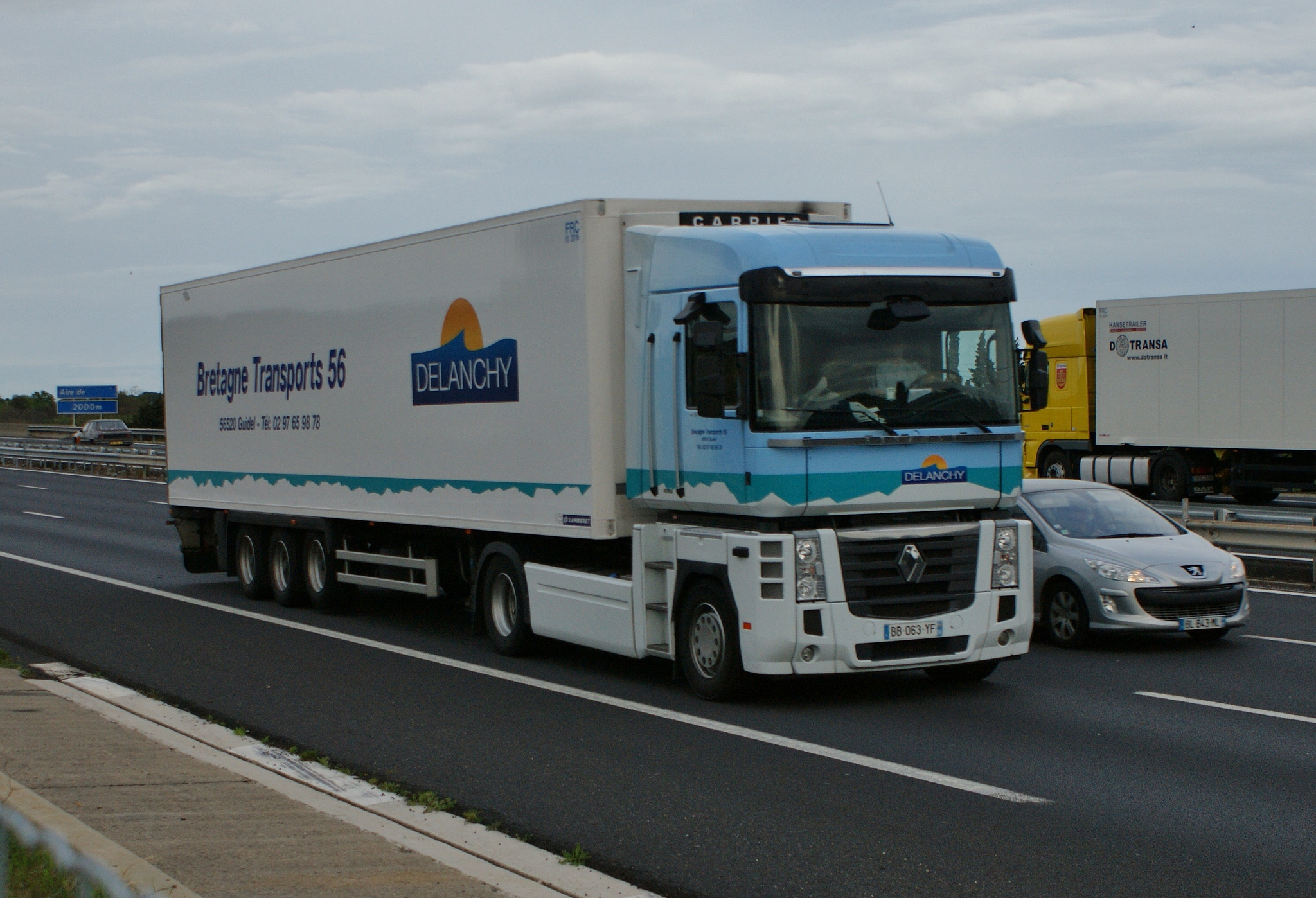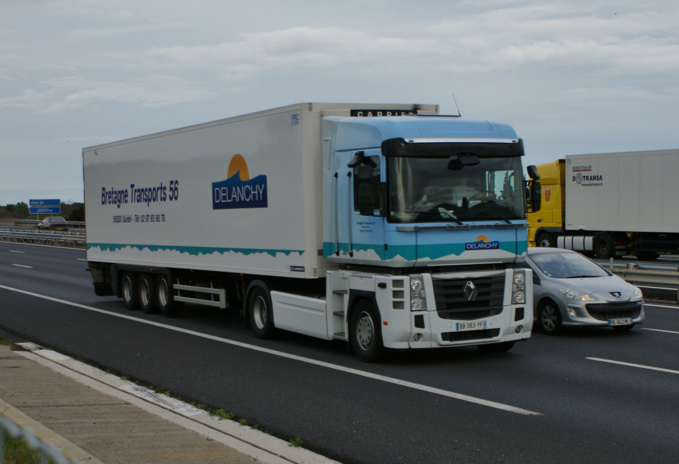At the same time, Europe produces more trucks than it buys: according to ACEA, exports in 2016 amounted to 347,108 vehicles worth 4 billion euros. 2.2 million LCV were produced in the EU. Taking into account the fact that commercial equipment is produced in several factories in Turkey, aside of the EU, 39 assembly enterprises in Europe, where cars of similar classes are produced, remain quite in demand.
The largest LCV sales market in the EU is France (437 415 units, + 7.1% in 2017), it is ahead of Germany (270 694 units, + 4.9%) and Great Britain (362,149 units, -3.6%). Compared to its neighbor, Germany prefers medium and heavy trucks (French, in general, like miniature cars, and trucks are no exception).
Cooperative competition
The European market is strongly distinguished among other regions by unusually high cooperation between producers. Simultaneously, they can be competitors in other segments.
The EU commercial vehicle market is historically low-profit, but with large volumes, analysts explain. Manufacturers are forced to reduce costs of developing and launching new models. Buyers of commercial vehicles believe that consumer properties, conditions and level of service that binds them to the brand and even the dealer are the most important.
Daimler has worked with Volkswagen (VW) in the production of large trucks for 20 years (since 1996). Mercedes-Benz Sprinter (the first generation) was identical to VW LT (second generation), which, with a change of generations, was renamed to VW Crafter (cars differed only in engines and transmissions). The trucks and their passenger versions were produced at two Daimler plants in Düsseldorf and Ludwigsfelde. The third generation Sprinter, which enters the market this year, and the second generation Crafter, which was launched in 2016, already differ in platforms, and VW, together with the corporate twin MAN TGE, moved to the VW plant in Poland, which produces Caddy.
Some alliances of manufacturers have been successful even longer, for example, the Sevel (Société Européenne de Vejicules Lеgers) partnership between Fiat and the PSA Group (Peugeot-Citroen), which produces LCV in factories in Italy, France, Turkey and South America. The most stable LCVs produced in Sevel - trucks Fiat Ducato, Peugeot Boxer and Citroen Jumper – have been assembled since 1981.
In the near future, some of these alliances may be merged as a result of new partnerships in the European automotive industry, primarily due General Motors (GM), leaving the region. Recall, GM sold its European subsidiary Opel/Vauxhaul to the French PSA Group. So, Opel Combo, which is very similar to Fiat Doblo, will now turn into a clone of the Citroen Berlingo / Peugeot Partner. However, this decision was made even before the sale of Opel, during a short alliance of GM with Peugeot, which broke up after Chinese Dongfeng purchased a stake in the French company.
Replacing the diesel
The main challenge for the European market is the planned transition to the technologies of alternative clean power units. Electric trucks are too expensive. Its batteries occupy body volume and reduce payload. In addition, the run of electric vehicles is not suitable for international transport and even long-distance in large European countries like Germany, France or Spain. The infrastructure for refueling gas and hydrogen fuel has not yet been developed, despite the efforts of several countries. According to ACEA, now 96% of LCVs sold in the EU are equipped with diesel engines. Only 1.7% of used fleet of vehicles and minivans have alternative engines.
Nevertheless, many European automakers are intensively preparing for the electrification of LCV. Renault has been selling electric delivery truck Kangoo ZE since 2011, and in 2017 updated the model, increasing the power reserve up to 270 km. In February 2018, the company began shipping its large Master ZE van to France. Its partner Nissan sells in Europe an electric delivery van e-NV200.
However, the most advanced experience of electrification of commercial vehicles belongs not to Daimler or VW, but to Deutsche Post. After purchasing a start-up company in Aachen, Germany, the national postal operator has been producing electric delivery vans under the Streetscooter brand since 2016, primarily for its own needs and for its DHL express delivery service. In May 2017, the company found third-party buyers. In August 2017, Deutsche Post agreed with Ford on the delivery of 2500 Transit chassis, for which an electric power unit and body will be installed. The trucks will be called Streetscooter Work XL.
source: fleeteurope.com
The largest LCV sales market in the EU is France (437 415 units, + 7.1% in 2017), it is ahead of Germany (270 694 units, + 4.9%) and Great Britain (362,149 units, -3.6%). Compared to its neighbor, Germany prefers medium and heavy trucks (French, in general, like miniature cars, and trucks are no exception).
Cooperative competition
The European market is strongly distinguished among other regions by unusually high cooperation between producers. Simultaneously, they can be competitors in other segments.
The EU commercial vehicle market is historically low-profit, but with large volumes, analysts explain. Manufacturers are forced to reduce costs of developing and launching new models. Buyers of commercial vehicles believe that consumer properties, conditions and level of service that binds them to the brand and even the dealer are the most important.
Daimler has worked with Volkswagen (VW) in the production of large trucks for 20 years (since 1996). Mercedes-Benz Sprinter (the first generation) was identical to VW LT (second generation), which, with a change of generations, was renamed to VW Crafter (cars differed only in engines and transmissions). The trucks and their passenger versions were produced at two Daimler plants in Düsseldorf and Ludwigsfelde. The third generation Sprinter, which enters the market this year, and the second generation Crafter, which was launched in 2016, already differ in platforms, and VW, together with the corporate twin MAN TGE, moved to the VW plant in Poland, which produces Caddy.
Some alliances of manufacturers have been successful even longer, for example, the Sevel (Société Européenne de Vejicules Lеgers) partnership between Fiat and the PSA Group (Peugeot-Citroen), which produces LCV in factories in Italy, France, Turkey and South America. The most stable LCVs produced in Sevel - trucks Fiat Ducato, Peugeot Boxer and Citroen Jumper – have been assembled since 1981.
In the near future, some of these alliances may be merged as a result of new partnerships in the European automotive industry, primarily due General Motors (GM), leaving the region. Recall, GM sold its European subsidiary Opel/Vauxhaul to the French PSA Group. So, Opel Combo, which is very similar to Fiat Doblo, will now turn into a clone of the Citroen Berlingo / Peugeot Partner. However, this decision was made even before the sale of Opel, during a short alliance of GM with Peugeot, which broke up after Chinese Dongfeng purchased a stake in the French company.
Replacing the diesel
The main challenge for the European market is the planned transition to the technologies of alternative clean power units. Electric trucks are too expensive. Its batteries occupy body volume and reduce payload. In addition, the run of electric vehicles is not suitable for international transport and even long-distance in large European countries like Germany, France or Spain. The infrastructure for refueling gas and hydrogen fuel has not yet been developed, despite the efforts of several countries. According to ACEA, now 96% of LCVs sold in the EU are equipped with diesel engines. Only 1.7% of used fleet of vehicles and minivans have alternative engines.
Nevertheless, many European automakers are intensively preparing for the electrification of LCV. Renault has been selling electric delivery truck Kangoo ZE since 2011, and in 2017 updated the model, increasing the power reserve up to 270 km. In February 2018, the company began shipping its large Master ZE van to France. Its partner Nissan sells in Europe an electric delivery van e-NV200.
However, the most advanced experience of electrification of commercial vehicles belongs not to Daimler or VW, but to Deutsche Post. After purchasing a start-up company in Aachen, Germany, the national postal operator has been producing electric delivery vans under the Streetscooter brand since 2016, primarily for its own needs and for its DHL express delivery service. In May 2017, the company found third-party buyers. In August 2017, Deutsche Post agreed with Ford on the delivery of 2500 Transit chassis, for which an electric power unit and body will be installed. The trucks will be called Streetscooter Work XL.
source: fleeteurope.com



















